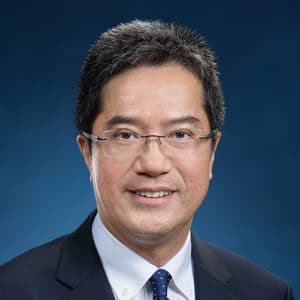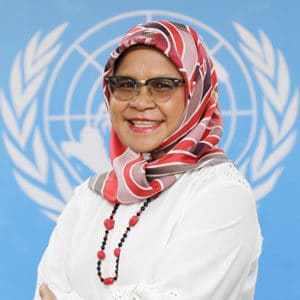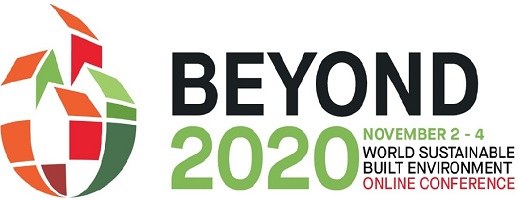
Views: 7
– Free registration till October 28 for Beyond 2020 Sustainable Cities and Communities, online event
Minapim by Hernan Valenzuela: BEYOND 2020 will focus on creating clear links between the most relevant UN Sustainable Development Goals (SDGs) and the built environment. The focus of the discussion will be achieving the UN Sustainable Development Goal 11, Sustainable Cities and Communities by the 2030 deadline. Beyond 2020’s point of view is that the best path for Sustainable Cities and Communities (SDG11) will only be possible if other relevant SDGs are met.
The event organized by Chalmers University, Research Institute of Sweden RISE, Johanneberg Science Park, Gothenburg City, has the cooperation of the scientific journals: Elsevier, Sustainability, Frontiers in Build Environment.
The key questions that guided the three days of the event are:
- How can the construction sector contribute to the creation of Sustainable Cities and Communities (SDG11) of the future?
- What other UN SDGs (see below) should play a role in pursuing SDG11 from the perspective of the built environment?
- How do the role and importance of the UN SDGs (relevant to the built environment) differ in various parts of the world?
- What challenges and opportunities result for the construction sector with the implementation of the UN SDGs?

Chrisna Du Plessis 
Michael WONG 
Maimunah Mohd Sharif
Invited Speakers:
- Roland Hunziker is Director of Buildings and Sustainable Cities at the World Business Council for Sustainable Development (WBCSD), based in Geneva, Switzerland.
- Anders Wijkman is Chairman of the Governing Board of Climate-KIC – the largest public-private innovation partnership for low carbon solutions in the EU.
- Holger Wallbaum is the host of the conference and full professor in sustainable construction at Chalmers University of Technology in Gothenburg, Sweden
- Maimunah Mohd Sharif is the Executive Director of the United Nations Human Settlements Program (UN-Habitat).
- Marcene Mitchell – Global Head, Strategy and Business Development at IFC’s Climate Business Department | World Bank Group
- Michael WONG Wai-lun is Secretary of Development for the Government of the Hong Kong Special Administrative Region.
- Kotchakorn Voraakhom – CEO and founder of LANDPROCESS / Porous City Network, Thailand
- Chrisna Du Plessis – Associate Professor and Head of the Department of Architecture at the University of Pretoria, South Africa
- Robin Teigland – Professor of Strategy, Scan Management, Chalmers University of Technology
- Cristina Gamboa – CEO of the World Green Building Council
- CHAN Ka-Kui is chairman of the Construction Industry Council.
- Ada Colau Ballano, Mayor of Barcelona
- CHEUNG Hau-wai is one of the founding directors of the Hong Kong Green Building Council (HKGBC) and now Chairman of the Board.
- Björn Johansson – Global Environmental Manager, Bonn
- Lena Hök – Senior Vice President of Ecological and Community Investments at Skanska

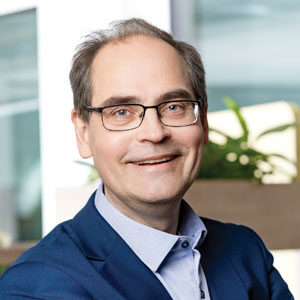
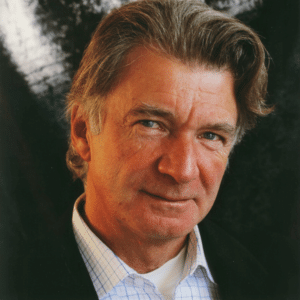
The BEYOND 2020 Organizing Committee selected the following 11 topics for NON-scientific sessions.
All topics will be incorporated and clearly organized in the schedule of scientific and NON-scientific sessions, within the detailed program, over the 3 days of the conference.
01 – CLIMATE MITIGATION AND ADAPTATION
The built environment and the construction sector have a significant impact on the environment. Buildings are responsible globally for about 30% of energy use and produce about 28% of global CO2 emissions; the construction sector produces about 1/3 of global waste, not to mention air, water and noise pollution and the destruction of natural habitats. At the same time, the built environment, particularly in cities where most of the global population lives, is threatened by the effects of climate change. This includes climate-related disasters that damage water, energy, transportation, buildings and telecommunications infrastructure.
Thus, there is an urgent need for a greater focus to be placed both on the decarbonisation of the built environment (both new and existing) and on improving the climatic adaptation capacities of cities, buildings and infrastructure.
Examples: almost zero energy construction, deep renovation at the building / district / city level, examples of climate-resistant built environment (example, resistant to floods / earthquakes); design and construction of green building elements; thermal bridge effect management; application of new materials / construction methods; prefabrication.
02 – URBAN REGENERATION, PLANNING AND PROJECT
Rapid urbanization is one of the biggest global challenges. With cities being the main engine of economic growth and development, urbanization has the capacity to positively transform the local social and economic situation. In this sense, the dynamism of cities represents a great opportunity for sustainable development. On the other hand, the mistakes made in managing urban growth are very difficult to undo. Investments in infrastructure, urban land use systems and layouts can be difficult to change for many decades. Thus, incorporating sustainability thinking into the design of new and existing cities is of fundamental importance. This can include, among others, features such as energy efficiency, high density development, a mix of uses / users, provision of public and open spaces, neighborhoods where you can walk, access to public transport, guarantee of affordable housing, presence community gardens, attention to general quality of life and, most importantly, adaptation to the climate.
Examples: urban retrofit for sustainability, urban regeneration projects with sustainability in mind, new sustainable districts, development of sustainable cities in the developing world / emerging economies, smart cities / districts.
03 – SOCIAL INCLUSION FOR LIVING SOCIETIES
Half of the world’s population lives in cities, with an upward trend. This is accompanied by some predictions that due to the strong pace of urbanization, cities will become more violent, unhealthy and socially exclusive.
The built environment can play a role in creating more inclusive communities and societies.
It can facilitate social inclusion, as well as building a community based on mutual respect and solidarity. It can contribute to the creation of livable societies that demand equal opportunities, decent living standards and urban health and well-being that are valuable to all, with diversity being seen as a source of strength.
Examples: urban and district projects with social inclusion, affordable housing projects, construction projects for well-being.
04 – PROMOTING GREEN AND BLUE STRUCTURES FOR SUSTAINABLE LIFE ENVIRONMENTS
Adapting to climate change is one of the greatest challenges that local communities will face in the 21st century. Ecosystem-based approaches, together with the preservation of natural heritage, will have to be an integral part of the overall efforts to adapt and mitigate climate change. Green spaces and blue structure are an important part of it. Parks, playgrounds, vegetation cover, open and rainwater solutions are examples of incorporating green and blue structures into the built environment. They can help to ensure that citizens have adequate opportunities for exposure to nature, that biodiversity is maintained, ecosystem services are offered, environmental risks such as air pollution or noise are reduced or impacts of extreme weather events are mitigated.
Examples: nature oriented solutions (for example, shrubs, trees, alleys) as a solution for urban heat islands, floods, air pollution and noise; urban vegetation for biodiversity, public health and safety, as well as solutions for rainwater treatment and runoff; parks and recreation areas, urban gardens, plant nurseries, ponds and various urban and natural areas (swamps, forests and surface water reservoirs) for greater sustainability and adaptation to the climate, urban agriculture.
05 – DESIGN FOR HOPE
The urbanization, globalization and modernization that we have experienced in the last decades have brought many positive effects simplifying our daily lives. At the same time, these trends that have affected the way societies around the world have also had some negative effects, among others that can be seen in our built environment. Rather, an expression of local character and culture, the built environment has become, to a certain extent, a victim of the search for western prosperity and for quick and ready production, while losing its local and individual character. The built environment is a reflection of human needs and desires and, therefore, the ability of local architecture to express it through buildings is crucial. “Design for hope” looks for new (old) ways to create buildings and places that respect the local context and biodiversity, are strongly rooted in history, landscape and the community; and they are sustainable, beautiful and a pleasure to live.
Examples: the role of beauty in design, architecture and planning then; good practices in habitable environments (schools, parks, natural heritage); admirable places.
06 – HEALTH, COMFORT AND WELL-BEING FOR A BETTER LIFE
Many people around the world spend more than 80% of their time in buildings. In addition, many of the chronic health problems of modern society related to lack of physical activity, stress and poor diet can be directly or indirectly linked to the architecture of buildings and cities. Therefore, a construction project, incl. a good quality of the internal environment is essential for us to feel comfortable and productive at home, at work or at school. Consequently, there is a growing demand for a built environment that more intentionally addresses human experience, health and well-being as essential elements of green building practice, both at the construction level, and at the district and even municipal level.
Examples: construction project / innovative solutions that contribute to a good internal environmental quality in residential, office / work and education buildings, human-centered construction project; socially just, culturally rich and ecologically restorative built environment; built environment for health and well-being; practices to minimize air pollution in cities.
07 – ENERGY SYSTEMS FOR THE FUTURE
Fossil fuels still play a dominant role in global energy systems today. At the same time, fossil fuels also have a very negative impact on air pollution, as well as on emissions of carbon dioxide (CO2) and other greenhouse gases.
To face the climate change crisis, it is essential that new renewable energy systems are developed, implemented and expanded. At the same time, it is necessary to seek comprehensive improvements in energy efficiency. Innovative solutions, initiatives and systems thinking approaches will be necessary for the energy transition to occur. The built environment will have to play an essential role in this energy transition.
Examples: clean energy strategies / projects at the district / city level, wide-ranging energy efficiency interventions.
08 – RESILIENT TRANSPORT SYSTEMS AND MOBILITY SOLUTIONS
Transport systems are among the most complex and critical systems in a large city. They are essential for the daily functioning of cities, as well as for their long-term growth and prosperity. On the other hand, they are considered the main sources of CO2 emissions, air pollution and lead to a large number of fatal accidents worldwide. In addition, they are also at risk of a variety of shocks related to climate change, including floods, heat waves and earthquakes. That is why cities have to adapt more and more, expand and strengthen their transport systems and offer innovative and more sustainable mobility solutions, in order to minimize their climate impact and, at the same time, make them more resilient.
Examples: safe, cheap and accessible transport infrastructure projects; low emission mobility solutions for a sustainable city; new business models or initiatives.
09 – CONSTRUCTED CIRCULAR ENVIRONMENT AND URBAN METABOLISM
The built environment in which we live today continues to be designed around the linear model of ‘making and disposing’, in which materials are obtained, used and then discarded as waste. This approach results in significant structural waste and has contributed to making the built environment one of the world’s largest consumers of resources and raw materials, and a major producer of waste and carbon emissions.
Thus, it is essential to reinforce the establishment of circular economy practices in the built environment, where renewable materials and products are used whenever possible, energy is provided from renewable sources, waste and negative impacts are projected, as well as materials, products and components are managed in loops.
Examples: circular business models in the construction sector; approaches to efficient construction waste reduction; flexible productive buildings; design for maintenance and deconstruction; integrated infrastructure systems; supporting rules and regulations.
10 – MATERIAL INNOVATION
The carbon emissions incorporated in buildings are produced during the manufacture, transportation, installation, maintenance and disposal of products and materials that enter buildings and represent about 11% of global emissions. Thus, not only do they incorporate emissions into a significant proportion of a building’s overall carbon footprint, but reductions in embedded carbon occur in the short term, which is critical considering the urgency of climate action. For this reason, it is essential to look at the innovation of materials and technology that will allow to reduce or eliminate emissions incorporated into the environment built by, e. material replacement, light construction, design for low cost impacts. The reintroduction of traditional building technologies can also develop local materials markets and support broader participation in the construction of human settlements.
Examples: new resource-efficient and / or low-emission building materials; examples of technological solutions for fossil-free construction; lightweight construction; design for flexibility and adaptability, need for low maintenance and recyclability, nanotechnological materials.
11 – DIGITALIZATION AND TECHNOLOGICAL INNOVATION FOR A SUSTAINABLE BUILDING ENVIRONMENT
Across society, a digital and technological transformation is taking place and affecting civil construction processes and stakeholders. For the built environment to become socio-economically effective and sustainable in line with the sustainable development objectives (SDGs), digitization and innovative technologies need to facilitate the planning, design, construction and management of the built environment. In this development, both the circular flows of resources and the circular economy are the main driving forces. Taking sustainability as a starting point, digitization and technological innovation in various forms, together with the evolution of industrial processes and methods, can contribute to the sustainable transformation of the built environment at all levels (building, district, city).
Examples: inclusive and intelligent digital solutions for a sustainable built environment; automation and self-learning technologies; blockchain; digitization of improved data and information sharing, communication in the construction value chain and operational and civil construction monitoring; digitization supporting the decarbonisation of construction and building efficiency; prefabrication, BIM, robotization, digital twins, 3D printing, smart buildings, districts and cities.
Sources: Beyond 2020 Chalmers University
Related article: Global Goals – New online tool shows impact

